|
|
 |
| . |
|
|
|
|
 |
| . |
|
|
In this section, we'll use the following texts
| "There is nothing more difficult
to take in hand, more perlious to conduct, or more uncertain in its success,
than to take the lead in the introduction of a new order of things"
Nicollo Machiavelli sixteenth century Florentine philosopher |
| . | The understanding is that
people studying this material will either be involved with a new company
that is just developing its business model, or has an existing business
model that needs to be changed to fit online environment. Therefore it
will be helpful to study the various business models (which are constantly
being revised) so that you personally may be able to be involved in the
decision making re: strategic planning : - which requires knowing what
business model you'll adopt.
WTGR |
| . | The e-commerce business
model is a direct result of the drastic changes effecting the previously
well known versions of traditional business models - these versions are
being stretched by many "exceptions" caused by globalization and technology
- this stretching has caused the traditional business model to be almost
unrecognizable due to the many additional allowances we have to make for
the "e" age
WTGR "it is getting harder for
companies to deliver profitable growth on a sustained basis. It is also
more difficult for many companies to hold their ground and not fall
behind. The key reasons include the dramatic increase in complexity in
managing business and the increasing premium put on innovation. The complexity
is due to significant and irreversible changes in the business environment.
The pace of business is accelerating beyond the ability of most corporations
to adjust. "
|
| Class
3 Jan
|
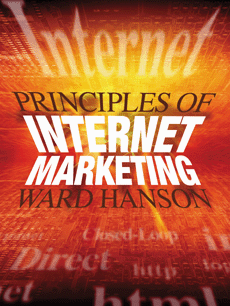 |
Hanson: Principles
of Internet Marketing
Chpt 5 Web Business Models http://simi.stanford.edu/hanson/chapter5.html Revenue based business models
p. 131- 132 Hanson text
|
| . | Several of the texts we
use in this course discuss Web Business Models. Some discuss the model
in terms of
|
| Class
3 Jan
|
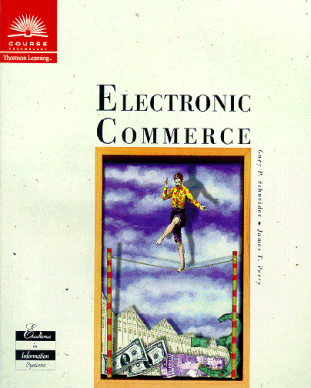
|
Schneider/Perry
Electronic Commerce
Chapter 8 titled Strategies for Marketing, Sales, and Promotion there is a section (also on the web site) titled Business Models for Selling on the Web see http://www.course.com/downloads/sites /ecommerce/ch08main.html the models described herein are
|
| Class
3 Jan
|
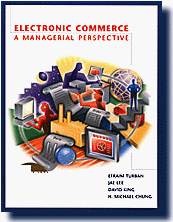
|
Turban: Electronic
Commerce: A Managerial Perspective, is not a required purchase,
but it does have several chapters that mirror topics we discuss from other
texts in this course + it has an accompanying web site + dowloadable .ppt
slides for each chapter
Internet
Business Models
The following are the "perspectives" that compose the e-business models, according to the book's authors
|
| Class
3 Jan
|
Internet
Business Models |
Successful
Internet Business Models - series on online Powerpoint slides at
http://www.becrc.org/education/ibplinfo.htm the first slide is at http://www.becrc.org/education/ibpl_3/ppframe.htm by Bill Bandrowski of the Electronic Commerce Resource Center, Bremerton, WA USA http://www.becrc.org/education/onlineseminars.htm online seminars |
| Class
3 Jan
|
.
.................... |
Virtual companies as
a business model
|
| Class
3 Jan
Class
Jan
Class
Jan
|
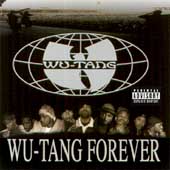 . . |
Virtual companies as
a business model
. Virtual companies are not just contained to the IT business world but exist in many types of formats in business throughout the globe. One example of the diversity in applying virtual companies as a concept is the famous rap group Wu-Tang Clan. As TIME magazine noted, (Dec 11th issue, 2000) "The Wu-Tang "brand" blossomed in 1993. Each member of the group periodically goes off and does some solo project from which they develop additional capability and experience, at the same time keeping public their alliance and affiliation with Wu-Tang. The "brand", in the form of the bands members, continue to also put out products under the bands name as well in order to maintain the value of the "base" of their individual reps. The
strength of the company, as explained in TIME, is "... maintaining just
a small core and outsourcing everything else."
The band members have so many sites devoted to their activities that Yahoo has devoted an entire Yahoo category to them http://dir.yahoo.com/Entertainment/Music/Artists/By_Genre/ Rap_and_Hip_Hop/Wu_Tang_Clan/Band_Members/ "Everything
else" is their forays into video games, clothing, comics, movies and many
other constantly new and evolving merchandise crossing over and back into
music, video, movies and the internet.
|
| . |
 |
Chapter 10 in this text
is all about Amazon.com as a business model
. |
| Jan
31 |
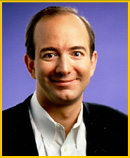 |
We will watch a video about
the biography of Jeff Bezos, founder and current Chairman of Amazon.com.
The purpose of the video
Toys R Us
|
| Feb
6th |
 |

Let's look at what the irreverent people at the Motley Fool.com site have to say about the future directions of Bezos and Amazon.com http://www.fool.com/news/2000/amzn001009.htm In an October 2000 article
on Fool.com, staff writers suggested
"Amazon.com was criticized last week [Oct 2000] for over-expanding its product offerings. Today, Amazon's Chairman and Chief Executive Officer Jeff Bezos answered the charges, and said his company intends to expand into many more product categories." "In an interview with Reuters, [Oct 2000] Amazon's Chairman and Chief Executive Officer Jeff Bezos said: "We will continue to do deals like the photo deal and we'll also continue to enter new product categories." "This model works," continued Bezos. "Selection is an advantage, not a disadvantage." He went on the say that he was sure his company would be profitable eventually, but wouldn't disclose when that might actually occur." Brian Lund, Co-manager
of the Rule Breaker Portfolio
Paul
Commins, Rule Breaker Portfolio Writer
|
| Feb
6th |
 |
"The Amazon Question: Will
Investors Trade Growth for Profits?"
"News that Amazon.com is slashing 1,300 jobs continued to rattle the e-commerce world Wednesday, as analysts said reduced sales forecasts from the bellweather company are a signal that the era of spectacular growth may have ended for the e-tail sector. Amazon chief executive officer Jeff Bezos and other executives blamed a cooling U.S. economy for the slowing sales. However, analysts said the more likely culprit is the company's core business in books, music and videos, which has matured to a point where earlier growth rates are no longer possible." |
| Feb
6th |

|
When you become a celebrity,
whether it be in government, sports, entertainment or business [and Jeff
Bezos has definitely become a celebrity] people will want to stick in their
"two cents worth" and give you unsolicited advice.
Read the humorous, and inciteful
article by Sean Carton
"Hello! Earth to Bezos! What the hell are you doing? You've built a great company based on the premise that stellar service, a great brand experience, and judicious application of your users' information can make an incredible site that millions of us can't do without. In a world where commodity-based dot-coms die out faster than gnats around a bug-light, you've figured out how to stand out from the crowd, sell kajillions of books, and inspire customer loyalty just this side of fanaticism. And you did it all by creating a system that gathers some basic preference information from us, puts it together with information about our basic shopping habits, and then combines it with the behavior of all other users in order to help us loyal customers find new products that consistently delight and inform us. You've even taken the rarely heard customer's voice and incorporated it into the site, allowing customers to see what other people like and don't like in order to make better buying decisions. The result? The dot-com poster-child that the rest of us mere mortals can only aspire to. And now you're throwing it all away." Carton's ponts are based
on the fact that Amazon.com made a point of collecting info from the customer
to allow them to to better satisfy customer interests during repeat visits
to the site - yet the good will created by that might be lost of Amazon
goes ahead and starts sharing that private profile info with othe Amazon.com
group member companies.
An interesting "unflattering" article about a speech Bezos gave. The writer mentions Amazon.com's patents. http://www.holtuncensored.com/members/column157.html "Amazon.com's two controversial
software patents - one of which he's used to sue his main competitor,
Barnesandnoble.com. Nor did he mention the latest patent, issued
only days ago for collaborative filtering, a method of sorting millions
of customer preferences electronically to help new customers choose
products and services.
|
| Cl | . | Business models and the
patenting of them
"Patents on Internet Business
Models"
"Why should you care?" Why? Because you'll find out, that most, if not all of the business practices that are completely common and obvious on the Internet today... will have been PATENTED by corporate behemoths like Amazon.com or Priceline.com... making it outright ILLEGAL for you to: 1.) Set up an affiliate program on your own; 2.) Create a site that conductions auctions or reverse auctions; 3.) Create a site where the customer will name their own price on items; 4.) Create a Web site with a button that allows one-click ordering; 5.) Create a Web site that does any kind of e-commerce at all? ...unless you ask Amazon.com for permission to do so; ...unless you buy the software from the single (or one of few) vendors that have been licensed by Amazon.com or Priceline.com, etc. to legally sell such software; ...unless you pay a
hefty MONOPOLY PREMIUM because all competition in the Web software market
has been virtually eliminated;"
Schmidt explains "What damage has been done? Amazon.com owns a patent on their "groundbreaking" idea of one-click ordering: This is the idea of placing a button on your Web site that allows ordering without entering credit card details every time you place the order. The USPTO should have said: DUH! Instead, they granted patent number 5,960,411 on 9/28/99. Now Amazon.com received a patent on "affiliate programs": The idea of issuing someone commissions as a reward for all sales that have been generated by a hyperlink from their site to yours. Again, anybody who ever created just one Web page would say: DUH! But the USPTO granted patent number 6,029,141 on 2/22/00. BOTH
IDEAS ARE PLAIN AND OBVIOUS. But, due to a loophole in U.S. patent law,
you, me, or anyone, could have applied for a "patent" on these business
processes, so as to extort royalties, or impose a de-facto e-commerce tax
on virtually all transactions made anywhere on the Web, from anyone in
the world who ever chooses to create Web sites that employ the same, inevitable,
and obvious IDEAS."
|
| Cl | . | Business models and the
patenting of them - the Law Firms Involvement
www.jonesaskew.com/articles/99/0499patpro.html Jones and Askew - which we noted in IEC 719, has an article on their web site discussing Patent Protection for E-Commerce Business Models
The premise, that Jones and Askew operate on is based on attracting traffic. They explain... "To succeed in this competitive
e-commerce market, a business must attract as many consumers as possible
to its Web site, while building and retaining consumer loyalty. Sometimes,
a Web site is more attractive
"To obtain a patent,
an inventor must demonstrate that an invention is directed to patentable
subject matter and is useful, novel and non-obvious over the prior art.
An invention must fall into one of four classes of patentable subject
matter: machines, articles of manufacture, compositions of matter, and
processes. For example, a computer software invention can be viewed as
a machine when combined with a computer, an article of manufacture when
distributed on a diskette or a CD-ROM, or a computer-implemented process.
An improvement to an invention included in these classes may also be patentable.
Examples of
|
| Class
4 Jan
|
. | "A Business Model of One's
Own"
Author: Leigh Buchanan Source: Inc. magazine - November 01, 1998 . "Can you actually patent a business model? A recent (1998) decision from the (U.S.) patent and trademark office says you can. And that isn't good news for entrepreneurs" http://www.inc.com/incmagazine/article/0,,ART1031,00.html Not a particularly easy to read article but it does cover the issues |